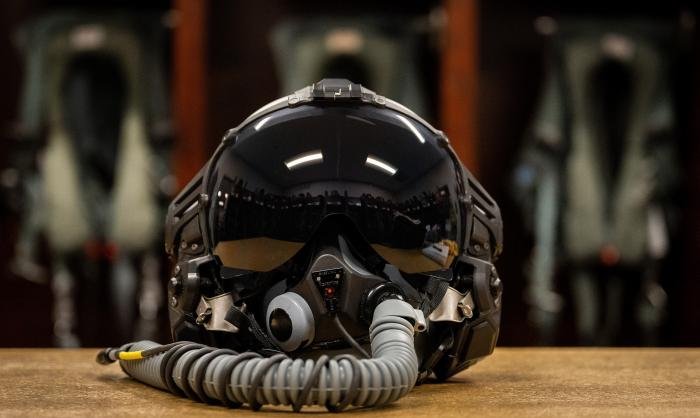Lockheed Martin F-22A Raptor pilots from the 301st Fighter Squadron (FS) – a US Air Force Reserve Command (AFRC) unit that is associated with the active-duty 325th Fighter Wing at Tyndall AFB, Florida – have kicked off developmental flight tests for the USAF’s new Next Generation Fixed Wing Helmet (NGFWH) at nearby Eglin AFB.
The start of flight testing was announced by the USAF on April 10, with the service adding that approximately five F-22A pilots from the 301st FS were flying with the “new lighter, cooler and more readily-equipped helmet.” In addition, testing of the new-generation helmet is being overseen by engineers from the Eglin-based 46th Test Squadron and 28th Test and Evaluation Squadron. The aim of the NGFWH programme is to provide fixed-wing combat pilots with a platform that is more comfortable, stable and balanced than those currently in use, while being able to accommodate helmet-mounted devices without causing neck strain or discomfort to users.

Commenting on the NGFWH programme and how it seeks to reduce the impact of helmet’s currently worn by fixed-wing combat pilots, Maj Brett Gedman – an F-22A pilot with the 301st FS – said: “It is common knowledge [that] fighter pilots have long-term neck and back issues. Therefore, having a lightweight helmet designed with the operator in mind will have positive long-term impacts on the health of our fighter pilots during and after service.”
As part of this test series – which marks the second round of developmental tests with the LIFT Airborne Technologies-manufactured helmet prototype since the firm was awarded the development contract in 2022 – the F-22A pilots will report any feedback they have about the platform’s wearability, communication and visibility (among others) after each flight. Engineers from the 46th Test Squadron and 28th Test and Evaluation Squadron will then compile the data prior to sending it back to the manufacturer. The USAF states that, aside from some minor tweaks, user feedback so far has been positive.
The NGFWH is expected to replace the ageing HGU-55 helmet, which has been used by all USAF fixed-wing combat aircraft aircrew – except for those who fly the Lockheed Martin F-35 Lightning II – for more than 40 years.
“The design of the helmet allows for unparalleled visibility, mobility and comfort in the cockpit. The increased visibility combined with the mobility it provides made it a massive improvement over what I am used to flying with. It is clear this has been a generational leap in technology that the fighter pilot deserves, which is long overdue,” Gedman explained.

He added that these factors are critical for operating in a high-G within-visual-range environment. “With near-peer threats narrowing the gap daily, it is critical the fighter pilots have every tactical advantage possible. Details matter and it is coming down to the smallest details including the gear we wear.”
Many of the flight enhancements available on the legacy HGU-55 helmet, such as night-vision goggle (NVG) mounts, now come as standard on the NGFWH, instead of having to be manually added, adjusted and fitted to the aircrew – a process that takes hours to prepare. For instance, to add an NVG mount to the legacy helmet, airmen have to use power tools to drill into the HGU-55 and secure the bracket.
When the F-22A squadrons depart Eglin for their new home at Joint Base Langley-Eustis, Virginia, the NGFWH test engineers will follow to start a new round of testing with new pilots. These tests will eventually spread out to other aircraft, with the next types to go through the process set to be the HC-130J Combat King II and B-1B Lancer.

